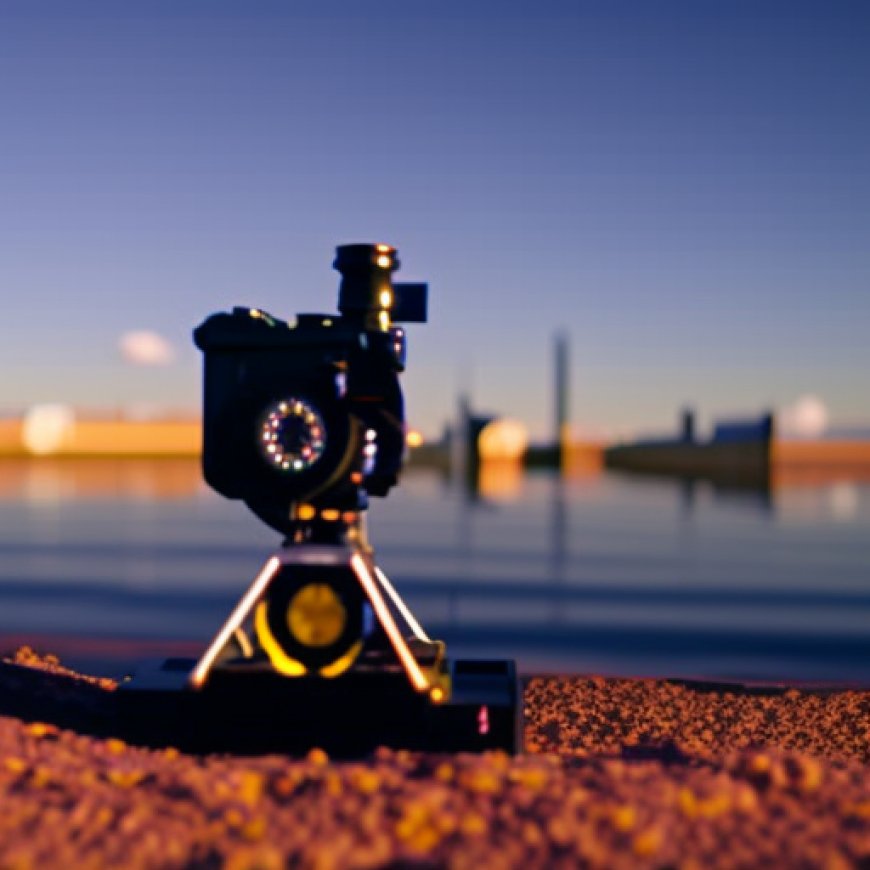New Solar-Powered Desalinator Keeps Producing Clean Water Without Needing Sunshine
New Solar-Powered Desalinator Keeps Producing Clean Water Without Needing Sunshine Good News Network


Solar-Powered System Converts Saltwater into Fresh Drinking Water, Helping Achieve Sustainable Development Goals

Introduction
A new solar-powered system has been developed by scientists to convert saltwater into fresh drinking water, with the aim of reducing the risk of waterborne diseases such as cholera. This innovative technology aligns with the Sustainable Development Goals (SDGs) and has the potential to be deployed in rural communities worldwide.
The Technology
The researchers from King’s College London, in collaboration with MIT and the Helmholtz Institute for Renewable Energy Systems, built upon existing processes that convert saline groundwater to freshwater. They created a new system that utilizes solar power to consistently produce fresh drinking water. The technology, based on electrodialysis, separates salt using specialized membranes and adjusts to variable sunshine without compromising water production.
Field Tests and Results
The team conducted tests in the village of Chelleru near Hyderabad in India and successfully converted up to 10 cubic meters of saltwater into fresh drinking water. This amount was sufficient to meet the daily needs of 3,000 people. The system continued to operate effectively despite variations in solar power caused by cloud coverage and rain.
Benefits and Implications
Dr. Wei He from King’s College London believes that this technology can bring significant benefits to rural communities by increasing the supply of drinking water and improving health outcomes. It offers an affordable and eco-friendly alternative that can operate off the grid, enabling communities to access alternative water sources and address water scarcity and contamination.
Addressing Water Scarcity
Water scarcity affects 1.6 billion people in rural areas globally, with a significant portion relying on saline groundwater. Traditional desalination methods are often expensive and rely on grid systems or costly batteries. This new technology eliminates the need for a grid system and reduces reliance on batteries, making it more accessible and affordable for rural communities, particularly in developing countries like India.
Scaling Up and Future Applications
The research team plans to scale up the availability of the technology across India through collaboration with local partners. Additionally, a team from MIT intends to create a start-up to commercialize and fund the technology. The system also has potential applications in agriculture, where climate change is affecting freshwater reserves for irrigation.
Conclusion
This solar-powered system for converting saltwater into fresh drinking water offers a sustainable solution to address water scarcity and improve access to clean water in rural communities. By aligning with the SDGs, it contributes to the goal of ensuring availability and sustainable management of water and sanitation for all.
SDGs, Targets, and Indicators
1. Which SDGs are addressed or connected to the issues highlighted in the article?
- SDG 6: Clean Water and Sanitation
- SDG 7: Affordable and Clean Energy
- SDG 13: Climate Action
2. What specific targets under those SDGs can be identified based on the article’s content?
- SDG 6.1: By 2030, achieve universal and equitable access to safe and affordable drinking water for all.
- SDG 6.3: By 2030, improve water quality by reducing pollution, eliminating dumping and minimizing release of hazardous chemicals and materials, halving the proportion of untreated wastewater, and increasing recycling and safe reuse globally.
- SDG 7.1: By 2030, ensure universal access to affordable, reliable, and modern energy services.
- SDG 7.2: By 2030, increase substantially the share of renewable energy in the global energy mix.
- SDG 13.2: Integrate climate change measures into national policies, strategies, and planning.
3. Are there any indicators mentioned or implied in the article that can be used to measure progress towards the identified targets?
- Indicator for SDG 6.1: Proportion of population using safely managed drinking water services.
- Indicator for SDG 6.3: Proportion of wastewater safely treated.
- Indicator for SDG 7.1: Proportion of population with access to electricity.
- Indicator for SDG 7.2: Renewable energy share in the total final energy consumption.
- Indicator for SDG 13.2: Number of countries that have integrated climate change into their national policies, strategies, and planning.
Table: SDGs, Targets, and Indicators
| SDGs | Targets | Indicators |
|---|---|---|
| SDG 6: Clean Water and Sanitation | 6.1: By 2030, achieve universal and equitable access to safe and affordable drinking water for all. | Proportion of population using safely managed drinking water services. |
| SDG 6: Clean Water and Sanitation | 6.3: By 2030, improve water quality by reducing pollution, eliminating dumping and minimizing release of hazardous chemicals and materials, halving the proportion of untreated wastewater, and increasing recycling and safe reuse globally. | Proportion of wastewater safely treated. |
| SDG 7: Affordable and Clean Energy | 7.1: By 2030, ensure universal access to affordable, reliable, and modern energy services. | Proportion of population with access to electricity. |
| SDG 7: Affordable and Clean Energy | 7.2: By 2030, increase substantially the share of renewable energy in the global energy mix. | Renewable energy share in the total final energy consumption. |
| SDG 13: Climate Action | 13.2: Integrate climate change measures into national policies, strategies, and planning. | Number of countries that have integrated climate change into their national policies, strategies, and planning. |
Note: The specific indicators mentioned in the article were not explicitly stated. The indicators provided in the table are relevant indicators that can be used to measure progress towards the identified targets based on the content of the article.
Behold! This splendid article springs forth from the wellspring of knowledge, shaped by a wondrous proprietary AI technology that delved into a vast ocean of data, illuminating the path towards the Sustainable Development Goals. Remember that all rights are reserved by SDG Investors LLC, empowering us to champion progress together.
Source: goodnewsnetwork.org

Join us, as fellow seekers of change, on a transformative journey at https://sdgtalks.ai/welcome, where you can become a member and actively contribute to shaping a brighter future.







